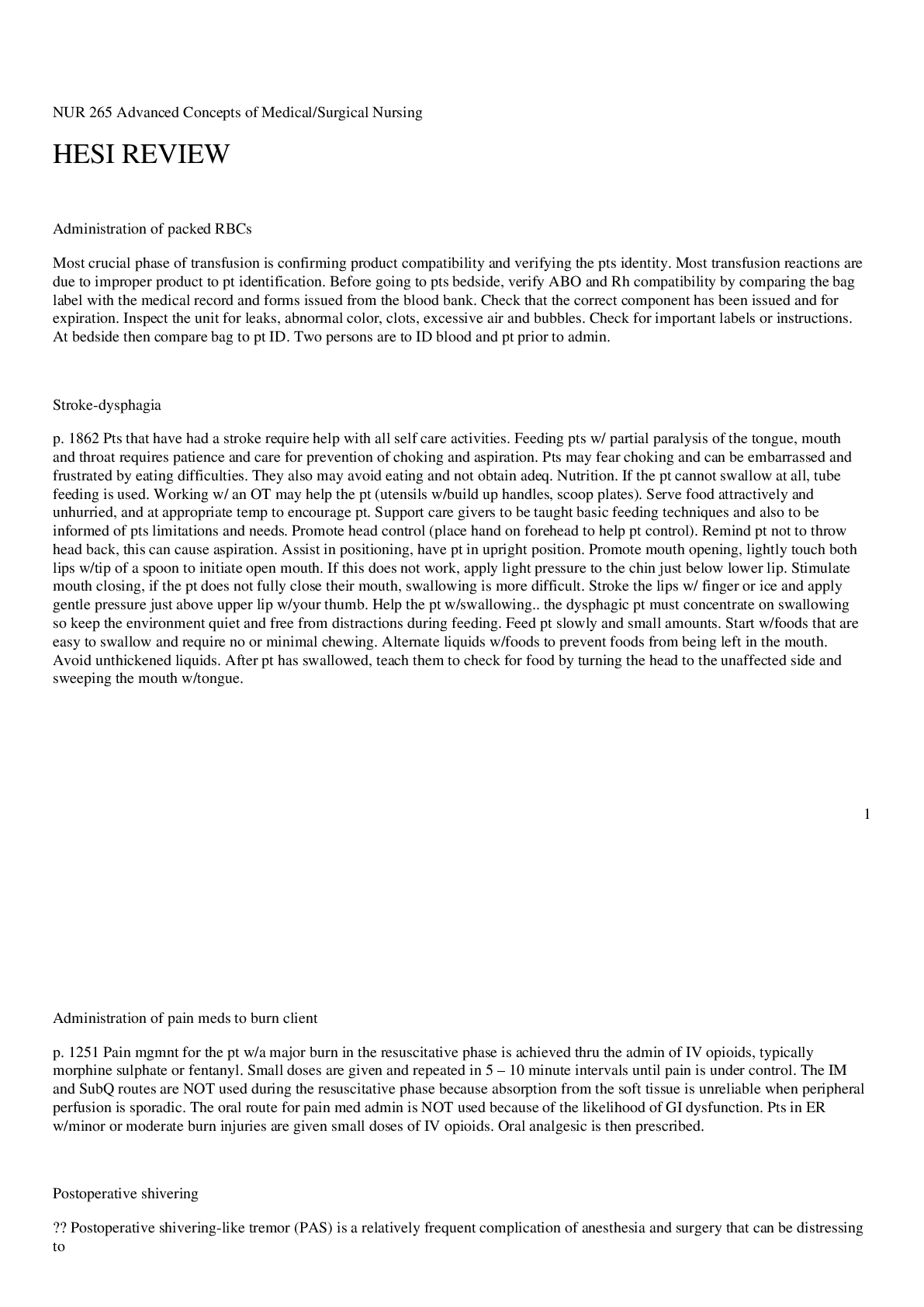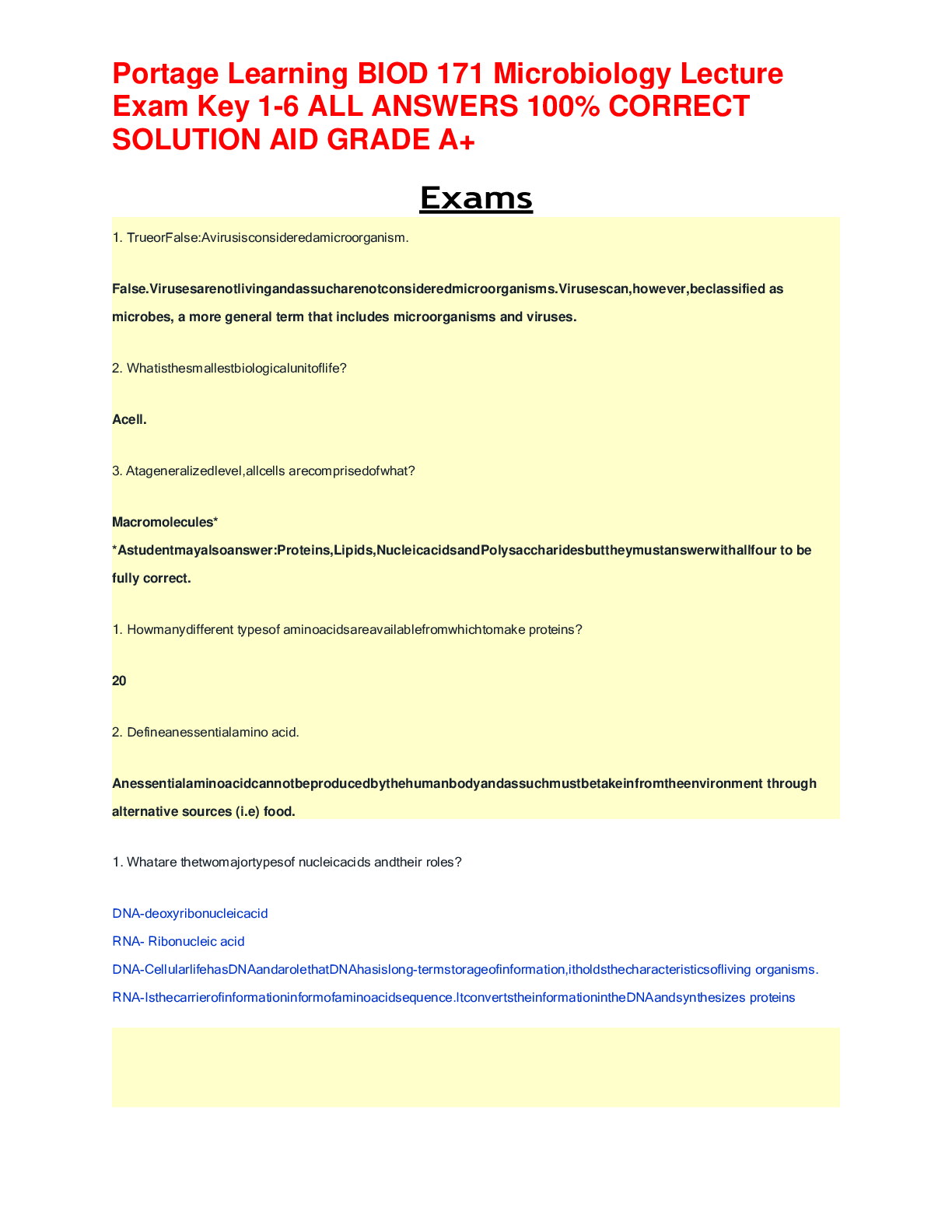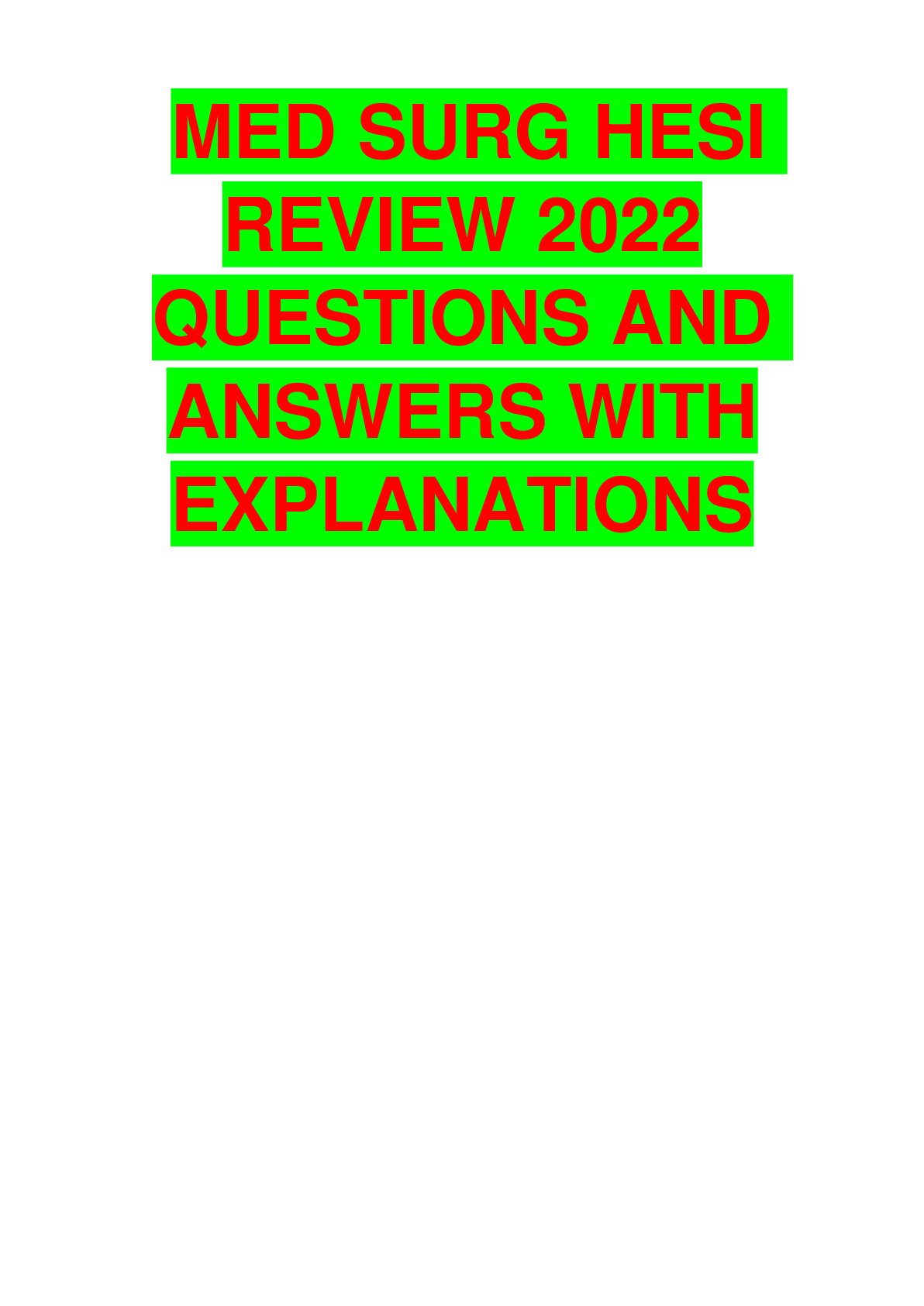Search for
Filter By
Rating
Price in $
Search for Courses, Exams, Books, TEST BANKS, Assignments, notes...
Showing All 0 results
Sort by
*NURSING > HESI MED SURG > NUR 265 Advanced Concepts of Medical/Surgical Nursing HESI REVIEW (All)
*NURSING > HESI MED SURG > Saint Mary’s College of California - MATH 101, Med Surg 2 HESI Topics (Latest 2021) Correct Study Guide, Download to Score A (All)
*NURSING > HESI MED SURG > Portage Learning BIOD 171 Microbiology Lecture Exam Key 1-6 ALL ANSWERS 100% CORRECT SOLUTION AID GRADE A+ Course Portage Learning BIOD 171 Microbiology Lecture Exam Key 1-6. (BIOD171) Institution Portage Learning True or False: A virus is considered a microorganism. False. Viruses are not living and as such are not considered microorganisms. Viruses can, however, be classified as microbes, a more general term that includes microorganisms and viruses. 2. What is the smallest biological unit of life? A cell. 3. At a generalized level, all cells are comprised of what? Macromolecules* *A student may also answer: Proteins, Lipids, Nucleic acids and Polysaccharides but they must answer with all four to be fully correct. 1. How many different types of amino acids are available from which to make proteins? 20 2. Define an essential amino acid. An essential amino acid cannot be produced by the human body and as such must be take in from the environment through alternative sources (i.e) food.Portage Learning BIOD 171 Microbiology Lecture Exam Key 1-6 ALL ANSWERS 100% CORRECT SOLUTION AID GRADE A+ 1. The plasma membrane (select all that are true): A. Restricts movement of materials in and out of the cell B. Is often a triple layer comprised of lipids C. Prevents essential nutrients from escaping D. Contains hydrophobic tails pointing outward A and C 2. How many carbon atoms are present in the monosaccharide glucose? A. 1 B. 3 C. 6 D. 12 (All)
*NURSING > HESI MED SURG > University of Rhode Island - THE BEST KNOWLEDGE OF THE RESPIRATORY DISEASES -USE IT FOR FINAL TOUCHES BEFORE EXAM DAY. (All)
Health Care > HESI MED SURG > HESI I MEDSURG STUDY GUIDE - Hematemesis Information Nursing Processes (All)
*NURSING > HESI MED SURG > Hesi Med Surg review latest 2020/2021 (All)
*NURSING > HESI MED SURG > Hesi Med Surg review latest 2020/2021 (All)
*NURSING > HESI MED SURG > HESI MED SURG REVIEW LATEST 2020 (All)
*NURSING > HESI MED SURG > HESI MED SURG EXAM. QUESTIONS AND ANSWERS.LATEST 2021. A+ RATED (All)

 Correct Study Guide, Download to Score A.png)








